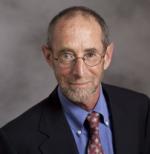Featured Image Courtesy Sherith Israel Photo by David Wakely
The California Historical Building Code: Empowering Design Professionals to Save Historic Buildings
After Participating in This Webinar, You Will Be Able To...
- Identify a broad range of potential applications for which the CHBC can be utilized
- Solve common problems encountered during repair and strengthening of historic buildings
- Understand that the authority of the CHBC is not subordinate to the CBC when dealing with historic buildings and that the CBC only applies to the extent authorized by the CHBC
- Understand the role of the appeals process with the State Historical Building Safety Board.
Handouts
PowerPointSpeakers
 Alan R. Dreyfuss, AIA, Associate Principal, Wiss, Janney, Elstner Associates, joined WJE in 2007 with twenty-five years of experience in architectural design and historic preservation.Specializing in rehabilitation and adaptive reuse of historic structures, his projects have included commercial, institutional, and private clients and have ranged in scale from a one room, wood-frame school house to a brick and terra cotta-clad high-rise.Mr. Dreyfuss has experience in Historic Resource Conditions Assessments, Evaluation for CEQA and Section 106 compliance, Historic Structure Reports, National Register applications, and the application of Federal Historic Preservation Tax Credits.Mr. Dreyfuss is recognized as an expert in building codes for historic buildings. He was instrumental in the development of the 2001 and 2007 California Historical Building Code and is currently chair of the State Historical Building Safety Board.Mr. Dreyfuss' preservation and design projects have been recognized by the Rudy Brunner Award for Urban Excellence and the Central Valley Chapter of the American Institute of Architects. Seven of those projects have received Design Awards from the California Preservation Foundation. Alan R. Dreyfuss, AIA, Associate Principal, Wiss, Janney, Elstner Associates, joined WJE in 2007 with twenty-five years of experience in architectural design and historic preservation.Specializing in rehabilitation and adaptive reuse of historic structures, his projects have included commercial, institutional, and private clients and have ranged in scale from a one room, wood-frame school house to a brick and terra cotta-clad high-rise.Mr. Dreyfuss has experience in Historic Resource Conditions Assessments, Evaluation for CEQA and Section 106 compliance, Historic Structure Reports, National Register applications, and the application of Federal Historic Preservation Tax Credits.Mr. Dreyfuss is recognized as an expert in building codes for historic buildings. He was instrumental in the development of the 2001 and 2007 California Historical Building Code and is currently chair of the State Historical Building Safety Board.Mr. Dreyfuss' preservation and design projects have been recognized by the Rudy Brunner Award for Urban Excellence and the Central Valley Chapter of the American Institute of Architects. Seven of those projects have received Design Awards from the California Preservation Foundation. |
| Mr. Terrence Paret, Senior Principal, Wiss, Janney, Elstner Associates. Since joining WJE in 1986, Mr. Paret has performed hundreds of engineering investigations in the U.S. and abroad, focusing on the evaluation of structures after earthquakes; on the prediction of the probable performance of new and existing buildings in future earthquakes; and in the design of repairs and rehabilitation to mitigate damage and improve earthquake resistance. He has investigated structures that have been damaged or have collapsed due to natural disasters such as earthquakes and floods, and has evaluated a multitude of fire-damaged structures, defective or deteriorated structural elements, systems, construction materials and installations.Prior to joining WJE, Mr. Paret was a Designer of high-rise reinforced concrete buildings in New York City. His Practice Areas are Structural Performance Evaluation, Earthquake Engineering, Failure Investigation, Repair and Rehabilitation Design, Seismic Risk Assessment, Seismic Repair and Retrofit Design, Structural Analysis / Computer Modeling and Peer Review. Mr. Paret’s projects have involved high-and low-rise buildings; modern and historic buildings; commercial, residential, industrial, parking, medical, and institutional buildings; and structural systems consisting of steel, concrete, wood, and masonry.He is a Member of American Institute of Steel Construction (AISC), American Society of Civil Engineers (ASCE), Earthquake Engineering Research Institute (EERI), Seismological Society of America (SSA), Structural Engineers Association of California (SEAOC) and Structural Stability Research Council (SSRC). He holds a Bachelor of Science in Civil Engineering from University of Vermont in 1981 and an Master of Science in Structural Engineering from University of California, Berkeley in 1985. |
 Gwenyth Searer, Associate Principal, Wiss, Janney, Elstner Associates, works on projects involving a wide variety of structural materials, including steel, concrete, timber, masonry, and aluminum. She also has significant experience evaluating facade access issues and existing claddings as well as peer review of new claddings.Ms. Searer has particular expertise in the field of earthquake engineering. Her experience includes the investigation of earthquake damaged structures after a number of major earthquakes, including Loma Prieta, Northridge, Turkey, Nisqually (Seattle), Tōhoku (Japan) and Napa. She has performed linear and nonlinear seismic analyses of concrete shear wall buildings, concrete and steel moment-frame buildings, steel braced frame buildings, unreinforced masonry structures, and wood structures. Gwenyth Searer, Associate Principal, Wiss, Janney, Elstner Associates, works on projects involving a wide variety of structural materials, including steel, concrete, timber, masonry, and aluminum. She also has significant experience evaluating facade access issues and existing claddings as well as peer review of new claddings.Ms. Searer has particular expertise in the field of earthquake engineering. Her experience includes the investigation of earthquake damaged structures after a number of major earthquakes, including Loma Prieta, Northridge, Turkey, Nisqually (Seattle), Tōhoku (Japan) and Napa. She has performed linear and nonlinear seismic analyses of concrete shear wall buildings, concrete and steel moment-frame buildings, steel braced frame buildings, unreinforced masonry structures, and wood structures. |
